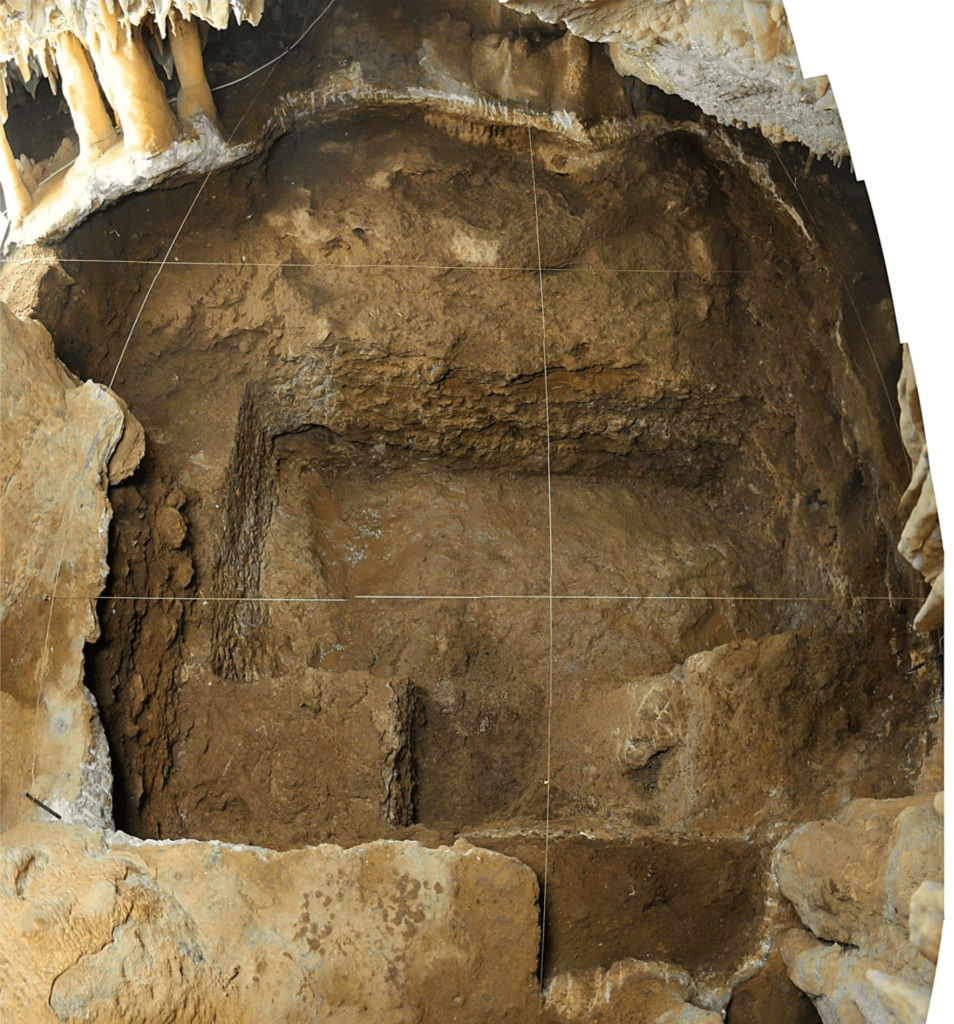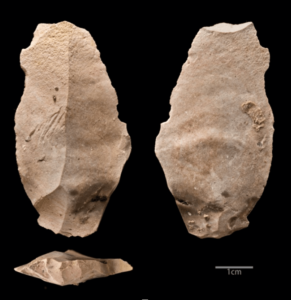New Paper in Science - The last interglacial Iberian Neandertals as fisher-hunter-gatherers
University of Adelaide researchers join an international team to question Neanderthals behaviour.
A paper published in Science today involving University of Adelaide researchers A/Prof. Lee Arnold and Dr Martina Demuro provides new insights into Neanderthal subsistence strategies and further questions the behavioural gap once thought to separate Neanderthals from contemporaneous Homo sapiens groups.
The study reports on excavations and dating research undertaken at the Portuguese archaeological site of Figueira Brava - a cave site on the Atlantic coast, 30 km south of Lisbon. The study shows that the cave was used as a shelter by Neanderthal populations over the course of twenty millennia between 86,000 and 106,000 years ago - that is, during the Last Interglacial period, when Earth's climate was similar to today. The Neanderthal occupants left abundant archaeological remains, including indicators of intensive fire use, quartz and flint tools, and food remains. Most significantly, the site’s archaeology reveals that fishing and shell fishing were important components of the Neanderthal subsistence economy.
The findings
The Figueira Brava cave is currently located on the seashore, but during past periods of human occupation the coastline was between 750 m and >2000 m away. Despite the distance, its occupants routinely consumed and brought to the site marine-sourced foods such as molluscs, crustaceans, fish, waterfowl and marine mammals.

The marine abrasion platform of MIS 5e and the original, now-unroofed cave space. Image: Pedro Souto.
The Neanderthals of Figueira Brava complemented these marine and coastal resources by hunting deer, goats, horses, aurochs and small prey, and by collecting fruits and nuts from olive trees, vines, fig trees, pine trees and other species typical of the Mediterranean climate. The diversity of resources documented at Figueira Brava exceeds that observed in regional Mesolithic sites used by Homo sapiens between 7500 and 9000 years ago.
In the most intensive Neanderthal occupation phases, the density and structure of mollusc accumulations at Figueira Brava are identical to those observed in Mesolithic shell middens. These observations reveal that the diet of Neanderthal populations from the Iberian Atlantic coast included an important marine component.

The Area F excavation trench at the end of the 2013 field season. Each grid unit is 1 m². Image: João Zilhão.
The University of Adelaide research, partly funded by an Australian Research Council DECRA project awarded to Dr Demuro, focused on dating sediments contained within the site using a technique known as optically stimulated luminescence (OSL) dating.
“This technique allows us to provide reliable ages for archaeological remains that are too old to be dated using radiocarbon. We can determine when individual grains of quartz were last exposed to daylight before they became buried in the natural sediment environment. In doing so we can provide an indirect age for the archaeological remains contained within the sediments themselves” explains A/Prof Arnold.
“In this study, we were able to independently compare our OSL ages with a second set of ages obtained using a technique known as uranium-series dating, which is applicable to cave speleothems. The two sets of results were in perfect agreement, providing strong evidence that Neanderthals occupied the cave during the Last Interglacial” adds Dr Demuro.
Rethinking current models
Evidence for routine exploitation of marine resources, such as the harvesting of shellfish, fishing, and seal hunting, by coastal populations of Neanderthals in Europe and Asia has, until now, been scarce. However, the evidence for these subsistence activities among their anatomically modern contemporaries (Homo sapiens) in South Africa is well known. This apparent contrast has fuelled an influential model of human evolution that points to the habitual consumption of aquatic resources by anatomically modern African populations of the Last Interglacial (foods rich in Omega 3 and other fatty acids that favour the development of brain tissues) as the driver for an increase in cognitive capacities.


Stone tools from Area F (Photos: J. P. Ruas. Laminary Levallois flakes from, respectively, units IH4 and IH6; the longest is 6 cm.
This diet-fuelled advancement in cognitive capacities has been used to explain the early appearance, among African sapiens populations, of a symbolic material culture including body painting with ochre, the use of pendants, and decorations of ostrich egg containers with geometric motifs. According to this model, such behaviours would have reflected a capacity for abstract thought and communication via symbols and would have led to the emergence of more organised and complex societies, whose demographic growth ultimately resulted in the colonisation of Eurasia. In the process, Neanderthals and other “non-modern" populations - both anatomically and, by implication, cognitively - would have inevitably fallen into extinction.
During the past decade, however, there has been growing evidence to suggest that Neanderthals also had a significant symbolic material culture. Recent studies have revealed that Neanderthals practiced rock art, used sophisticated pigment blends, and practiced body ornamentation even earlier than has been documented among the first anatomically modern humans in Africa. The findings from Figueira Brava indicate that if the habitual consumption of marine resources played an important role in the development of cognitive abilities, then this happened on the scale of Humanity as a whole.
In terms of both subsistence and diet, there is no basis to propose that the anatomical differences used to distinguish "archaic" (Neanderthal) Europeans from "modern" Africans 86,000 to 106,000 years ago necessarily corresponded to different levels of cognition and intelligence. These results strengthen a vision of human evolution in which the known fossil variants are all to be interpreted as being part of a collective ancestry, and not as distinct species, with one being superior and the other being inferior.
The study of Figueira Brava has two other important consequences for our understanding of human evolution. First, human familiarity with the sea and its resources is much older and more widespread than previously thought, which reinforces the ability of early migrating populations to cross open oceans and reach new continents, including Australia. Second, the concept that Neanderthals were cold peoples, specialised in hunting large herbivores, results from a bias created by the history of research.
This image is largely valid for central and northern Europe, which were the focus of the first Palaeolithic archaeology studies, and which were dominated by steppe or tundra environments corresponding to the extreme northern limit of the human population - the Palaeolithic equivalent of the peoples that currently live in arctic regions. However, the vast majority of Europe's Neanderthals lived in the ice-free southern regions, especially in Italy and, above all, in the Iberian Peninsula, where archaeological research began decades later.
Just as the way of life and the economy of the Arctic peoples today is not indicative of the way of lives of hunter-gatherers in other regions, so too should caution be exercised when considering the way of life of northern Neanderthals as being representative of their entire population. Given that Neanderthal settlement was more extensive in the ice-free southern regions of Europe, it follows that most Neanderthals would have lived like the people of Figueira Brava.
Article by A/Prof. Lee Arnold and Dr Martina Demuro.
Cover image: Gruta da Figueira Brava, Arrábida, Portugal. Image: Pedro Souto.

Newsletter & social media
Join us for a sensational mix of news, events and research at the Environment Institute. Find out about new initiatives and share with your friends what's happening.
